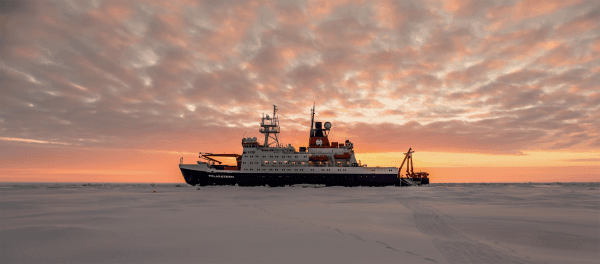The most ambitious research expedition ever to target the central Arctic got underway as the German icebreaker RV Polarstern pulled out of Tromso on September 20, destined for an ice floe where it will serve as a drifting base for hundreds of scientists during the next 13 months.
More than 10 years after CIRES scientist Matthew Shupe conceived of the idea, the Multidisciplinary Drifting Observatory for the Study of Arctic Climate (MOSAiC) has become a $150 million voyage of discovery led by the Alfred Wegener Institute, with significant funding by the US. Department of Energy and other US agencies. More than 400 scientists from 19 countries, including some of the world’s top Arctic researchers, will participate.
This is the first time a modern research icebreaker will operate in the direct vicinity of the North Pole year-round, including the nearly six-month long polar night during winter. In terms of the logistical challenges involved, the total number of participants, the number of participating countries, and the available budget, MOSAiC represents the largest Arctic expedition in history.
“It’s really amazing to see all the composure here during a really stressful time,” said Shupe, the U.S co-lead on the massive expedition, as dozens of scientists worked to install equipment on board just hours before Polarstern’s departure. “I am really energized by all these people and energy moving in the same direction. I see this around every corner of the ship.”
Continue reading at NOAA Research.
Image via NOAA Research.


